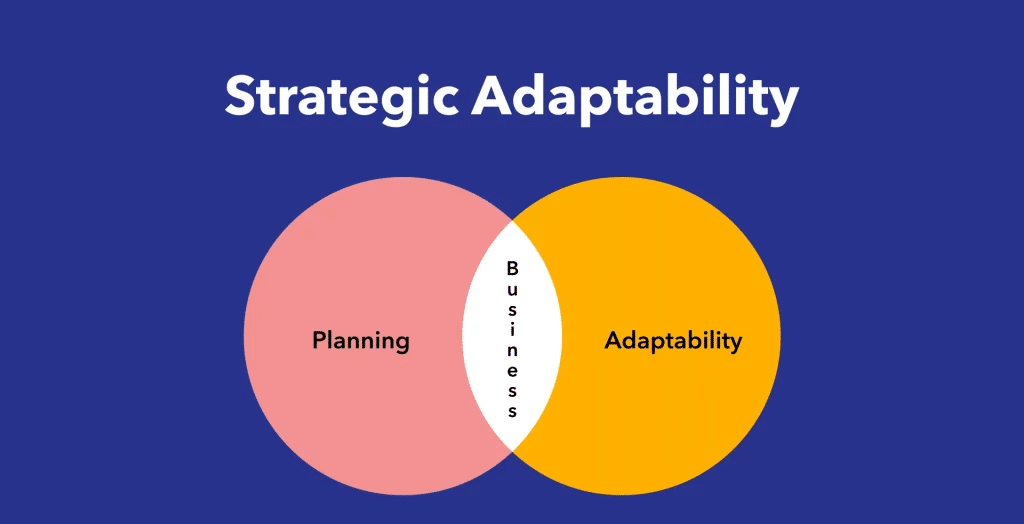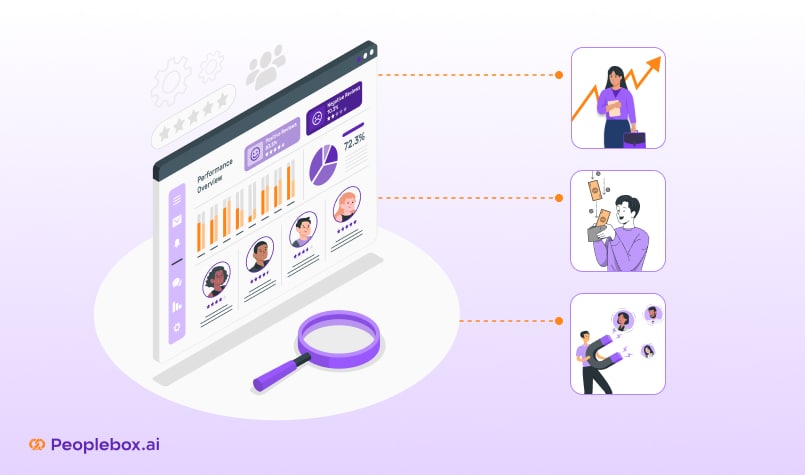The wise adapt themselves to circumstances, as water molds itself to the pitcher, says a Chinese Proverb.
Businesses must adapt their strategies and operations to the circumstances. The results, otherwise, can be devastating.
Let’s takes a look at a real-life business example:
We all are familiar with how good of a technology Google Android is and its success is attributed to its ability to adapt to change and embrace key strategies.
By adopting an open-source approach and collaborating with manufacturers and developers, Android created a thriving ecosystem that fostered innovation and rapid evolution.
The platform’s flexibility in device compatibility allowed it to reach a broad market by supporting various hardware configurations and form factors. Iterative development and frequent feature updates ensured that Android addressed user needs, enhanced security, and stayed competitive.
Integration of Google services and apps within the Android ecosystem, along with expansion into emerging technologies, further solidified Android’s position as a leading platform.
Android’s proactive approach to overcoming challenges, quickly adapting with a user-centric focus, led it to dominate the mobile operating system landscape.
This simplifies the importance of strategic adaptability for an organization.
In this blog, we will share insights into how you can adapt your strategies and save your company from sinking.
Before that, let’s understand strategic adaptability
What Is Strategic Adaptability?
Strategic adaptability refers to an organization’s ability to adjust its strategy and operations quickly in response to changing circumstances, new opportunities, and emerging trends.
Organizations, like Google, that quickly adapt to changing market conditions, shifting customer preferences, and technological advancements are more likely to thrive in today’s competitive landscape.
On the other hand, businesses that fail to adapt to risk are left behind and eventually fail altogether.

Role of Leaders in Adaptability
Leaders play a critical role in promoting strategic adaptability within their organization. Adapting to change in strategic management means being open to new ideas, fostering a culture of experimentation, and embracing the unknown.
Leaders who can do this are more likely to inspire their teams to be creative, innovative, and adaptable in the face of uncertainty.
One example of a leader who embraced new technology is Jeff Bezos, the founder of Amazon. When Bezos founded Amazon in 1994, e-commerce was still in its infancy. However, Bezos recognized the potential of the Internet and saw that it could be used to sell books online.
He quickly expanded beyond selling books to become one of the largest online retailers in the world, offering a wide range of products and services.
In addition, Amazon also embraced other emerging technologies, such as cloud computing, artificial intelligence, voice assistants and so much more.
Flexibility and Adaptability- Two sides of the same coin
It is important that we talk about flexibility before telling you how to adapt. Flexibility is crucial for adapting to change in strategic management because it allows individuals and organizations to adjust their plans and strategies in response to changing circumstances.
Being too rigid can be detrimental as it limits the ability to pivot and adapt. Flexibility enables individuals and organizations to be more agile, responsive, and innovative.
Types of flexibility that help leaders to adapt
There are three types of flexibility that leaders can utilize and practice to become more adaptable and assist others in adapting to change.
Cognitive
Cognitive flexibility helps leaders make better decisions by incorporating a range of thinking strategies and mental frameworks into their decision-making. It helps them recognize when old approaches don’t work, and see when to shift and introduce a change.
Emotional
Emotional flexibility involves varying the approach to dealing with one’s and others’ emotions, being comfortable with the process of transition, and moving the change forward.
Dispositional
Dispositional flexibility is about remaining optimistic while being realistic and open to change, seeing change as an opportunity rather than a threat.
How Fast Strategic Adaptability Helps Your Business?
Fast strategic adaptability helps businesses in multiple ways, such as:
1. Responsiveness to Market Changes
Fast strategic adaptability allows your business to quickly respond to changes in the market, such as shifts in consumer demand or changes in industry regulations. Companies that can quickly adapt to market changes are better positioned to maintain their market share and remain competitive.
2. Capitalizing on New Opportunities that set you apart
By being fast to adapt to change, you can take advantage of new opportunities that arise, such as emerging technologies or untapped markets. This can help you differentiate yourself from your competitors and gain a competitive advantage.
3. Anticipating and Mitigating Threats
Fast strategic adaptability enables you to anticipate and mitigate potential threats, such as changes in consumer behavior or new competitors entering the market. This proactive approach helps businesses minimize risks and avoid potential negative impacts on their operations.
4. Maintaining a Competitive Advantage
Adapting quickly to change enables you to maintain a competitive advantage over competitors. By being flexible and adaptable, you can respond to market changes more quickly than competitors, which can help you gain market share and grow your customer base.
5. Learning from and Adapting to Failures
Fast strategic adaptability also allows you to learn from your failures and adapt your approach accordingly. This helps to continuously improve your business operations and products/services, ultimately leading to long-term success.
6. Enhancing Organizational Agility and Resilience
Businesses that are fast to adapt to change are more agile and resilient. This allows you to quickly pivot operations and/or strategy if necessary, without experiencing significant business disruption.
7. Fostering a Culture of Experimentation and Risk-Taking
When you adapt fast you foster a culture of experimentation and risk-taking within your business. This allows employees to try new things and take risks, ultimately leading to innovation and growth.
8. Improving Customer Satisfaction and Loyalty
By adapting quickly to changing customer needs and preferences, you can improve customer satisfaction and loyalty. This helps to increase your customer retention and brand loyalty, which is one of the keys to increased revenue and profitability.
9. Increasing Employee Engagement and Motivation
When employees see their ideas and input being implemented quickly and effectively. When you adapt to accept suggestions from them, it increases their motivation and sense of ownership in the business.
10. Improving Organizational Performance and Profitability
Strategic adaptability significantly improves your business’s performance and profitability. By being able to quickly adapt to changes and capitalize on new opportunities, you can increase revenue, reduce costs, and improve your market standing.
Ways to Gain Fast Strategic Adaptability
1. Develop a Growth Mindset
Developing a growth mindset is a powerful way to gain fast strategic adaptability. Leaders with a growth mindset are more likely to embrace change and view obstacles as opportunities for growth.
Leaders must:
- Be open to learning from their mistakes and continuously seek to improve themselves and their organizations.
- Developing a growth mindset also involves developing problem-solving skills, which are essential for adapting to changing situations. Leaders with strong problem-solving skills can identify opportunities for innovation and growth and are better equipped to navigate challenges and mitigate risks.
By developing a growth mindset and problem-solving skills, you can cultivate a culture of continuous improvement and innovation in your organization.
2. Keep an open mind–Embrace Change and focus on moving forward
Keeping an open mind and embracing change is essential to gaining fast strategic adaptability. You should be willing to let go of the past and focus on the future, rather than getting stuck in old ways of thinking or doing things.
This means:
- Being receptive to new ideas, approaches, and perspectives, even if they challenge your existing beliefs or practices.
- Embrace change and move forward, you must let go of the fear of the unknown and uncertainty. Take risks and experiment with new ideas, and not be afraid of failures or setbacks.
- Developing this mindset requires continuous learning and self-improvement. It also requires you to engage in ongoing dialogue with your teams, customers, and stakeholders, to keep abreast of changes and evolving needs.
By focusing on the future and adapting to change, leaders can stay agile and responsive to market demands and drive the growth and success of their organizations.
3. Understanding the current situation
To gain strategic adaptability fast, it is essential to have a thorough understanding of the current situation. This involves analyzing the current market situation and identifying potential challenges and opportunities.
By doing so, you can:
- Anticipate changes and make proactive decisions to stay ahead of the competition.
- Identify the key drivers of change that may affect your business in the short and long term. This helps you to create a plan that can respond to changes and mitigate potential risks.
If you understand the current situation well, you can stay ahead of the game, and adapt quickly to changes in the market.
4. Building a Culture of Agility
An agile culture enables organizations to quickly respond to changes in the market, anticipate potential challenges, and seize new opportunities. This is why building a culture of agility is one of the crucial ways to gain fast strategic adaptability in any organization.
Creating a culture of agility allows organizations to remain competitive in an ever-changing business landscape. This means not only being able to adapt quickly to change but also being able to anticipate those changes before they occur.
You can do that by:
- Identifying the key characteristics that support agility, such as flexibility, adaptability, and the ability to experiment and take risks.
5. Identifying strategic priorities and practice innovation
Identifying strategic priorities and practicing innovation is a proactive approach to be more agile and flexible in responding to market changes.
You can do that by:
- Prioritizing areas where you need to focus your resources and energy.
- Align your priorities with the overall business strategy and vision.
- Practicing innovation is another important aspect of this strategy.
- Encourage and support employees to come up with new and innovative ideas.
- Partner with other businesses, startups, and research organizations to tap into new technologies, ideas, and processes.
6. Building Capabilities for strategic adaptability
Building capabilities for strategic adaptability involves identifying the key skills and competencies that are required to execute the strategic adaptability plan. These capabilities include leadership, communication, collaboration, and problem-solving skills.
To build these capabilities you can:
- Provide training and development opportunities for employees, such as workshops, seminars, and courses.
- Encourage employees to participate in cross-functional teams, stretch assignments, and do job rotations to enhance their skills and gain new perspectives.
- Invest in leadership development programs that focus on developing key leadership competencies, such as strategic thinking, decision-making, and change management. These programs can help to build a pipeline of leaders who are capable of leading the organization through times of change and uncertainty.
7. Foster Collaboration
Fostering collaboration between teams, departments, and even external stakeholders can help organizations quickly adapt to changes. When different perspectives are brought together, it is easier to find innovative solutions to problems and create new strategies that can help organizations thrive.
To foster collaboration you should:
- Create a culture of open communication and trust.
- Break down silos and encourage different teams and departments to work together towards common goals.
- Set up cross-functional teams to work on specific projects, providing opportunities for team members to share their expertise and learn from each other.
8. Leverage Technology
Another important aspect of fostering strategic adaptability is leveraging technology. This involves using digital tools and software to analyze data, track progress, and communicate with stakeholders.
For example, Peoplebox, a cloud-based software that helps organizations manage their employee performance by providing real-time feedback, performance analytics, and insights.
It offers goal setting and tracking, continuous feedback and recognition, employee engagement surveys, and performance analytics. These features help track progress of performance management strategies in real-time and make adjustments quickly to ensure they are aligned with their strategic goals.
Conclusion
Being able to respond quickly to market changes, capitalize on new opportunities, and mitigate potential threats are essential skills that can help your business maintain a competitive edge.
Building a culture of agility, developing problem-solving skills, fostering collaboration, and leveraging technology are some of the ways you build strategic adaptability. And all this requires deliberate practice and patience.
It is important to start adaptive strategic planning and its implementation to prepare for future challenges and opportunities. By doing so, you only increase the chances of success and profitability in the long run.







